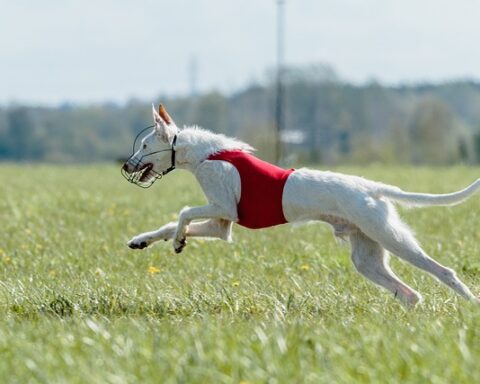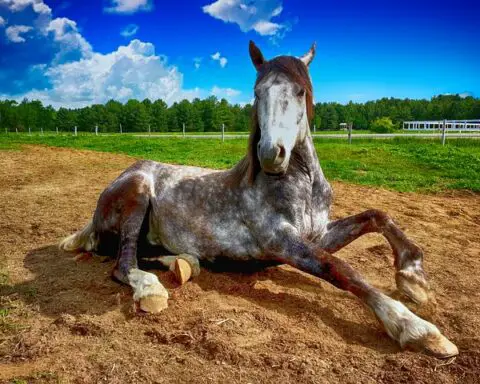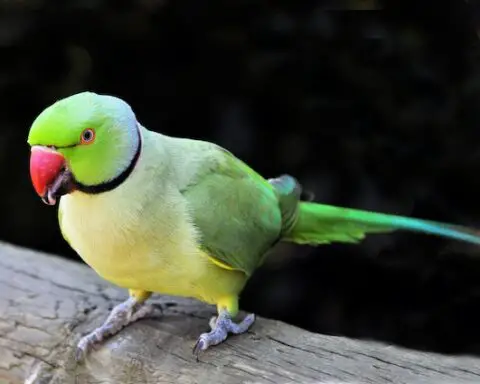The Canada goose is a rather large animal, and one that also includes a number of sub-species. There are considered to be 11 of these subspecies so far, and they include:
- Giant Canada goose
- Lesser Canada goose
- Western Canada goose
- Atlantic Canada goose
- Interior Canada goose
- Richardson’s Canada goose
- Dusky Canada goose
- Vancouver Canada goose
- Aleutian Canada goose
- Cackling Canada goose
These are all species of birds that live in the United States of America (as well as Canada), although it is more often than not the Giant Canada goose that you are likely to come across.
What does the Canada Goose Look Like?
The size and appearance of the Canada goose will vary dependent on the subspecies. Smaller birds can be only three pounds in weight, with the larger ones topping the scales at 14 or 15 pounds and over. Usually with a brown and grey body, black neck, bill and feet, and also a white breast and chin/section under the face, the female of the species is smaller than the male in many cases, and the males really can grow to some size.

How Long do Canada Geese Live?
There are a number of facts that lead to the Canada goose not living for as long as it should. In the best of conditions, the bird can actually live for twenty to thirty years, but many of them fall prey to humans or other things before that point. Many of them catch diseases can take hold very quickly when you’re talking about a bird species that lives in close proximity to water, and also in close proximity to each other. An infection wouldn’t take long to work around ten or fifteen birds in one small area, and when diseases happen, such as parasites or viral/bacterial infections, entire waterways can be contaminated. In some cases, many hundreds or thousands of birds can die, not just within the one species alone, and the body of water itself may even require treatment to remove whatever the problem was.
Where do Canada Geese Live?
You can find this bird across almost all of the United States now. There are both resident and migratory types of birds — ones that migrate to warmer climates, and ones that “resident” and, therefore, do not move around from winter to summer.
What about Canada Geese Nests & Goslings
Bird nests will be built by Canada geese when they have mated, usually creating a one-to-two foot diameter bowl, made of leaves, reeds, and grasses, as well as various feathers that have been pulled from the female bird. These nests will be close to water (less than 100-150 feet away), usually in among the shrubs on the ground, or hidden beneath shorter trees. They might hang out together a lot when they are not mating, but Canada geese do not like to be cramped together when they are nesting. In the most concentrated areas, you won’t find two nests that are closer than ten or fifteen feet to each other.
The eggs are generally laid in April, but it can be as late as May and as early as February. Only one egg is laid at a time, but the female will lay an egg and refrain from incubating until she has filled her nest. After her first egg has been laid, she will wait one to two days and then lay another one. She can lay as many as 10 to 15 eggs, but generally the amount falls between the 5-10 eggs. Only when all of her eggs are laid will she then begin the incubation period, and this helps to hatch them all at about the same time. About four weeks later, the eggs will start to hatch, and it will only take a day or so for them all to pop out. It only takes a day before the youngsters, called goslings, can move around, but they’ll have mom and dad to protect them for at least two months. They can go off on their own at this point, but geese usually stick together, with family gaggles of 100 or more.
If you take the eggs away, or try to destroy them, the geese will simply remove them and start again, laying another egg, and then attempting to incubate it. You will have quite a hard time getting to the eggs, however, as both the male and the female will hang around to defend it. If you get too close, you will be chased outta town (as they say) by one of the parents-to-be. Isn’t that what you would do if a predator were coming too close to your nest?
What do Canada Geese Eat?
Living close to the water gives Canada geese access to plenty of aquatic plants, which is a good thing. That’s one of the things they love to eat. Watercress and clovers are other particular favorites, and they also seem to like the stems of grasses that live close to the water too.
When they move further inland and away from the water, Canada geese become a real pain in the backside to agriculturalists and golf course owners, consuming vast quantities of grass, wheat, soy bean, and corn, and they seem to hit it the hardest right after it has been planted too. The larger the gaggle of geese, the quicker they will devour these crops, and the larger surface area they will devour also. They are known as a nuisance in these cases and sometimes require professional help with bird prevention.
Young Canada geese have a slightly different diet to their adult counterparts. In order to grow into full-sized adults, they need to eat more protein to fully develop. This protein is not easily found in the regular plant sources that they would usually eat, so it is common for goslings to gorge on small crustaceans and insects. This is quite easy for them, seeing as most of it clings to the vegetation that they also eat, in the water.






